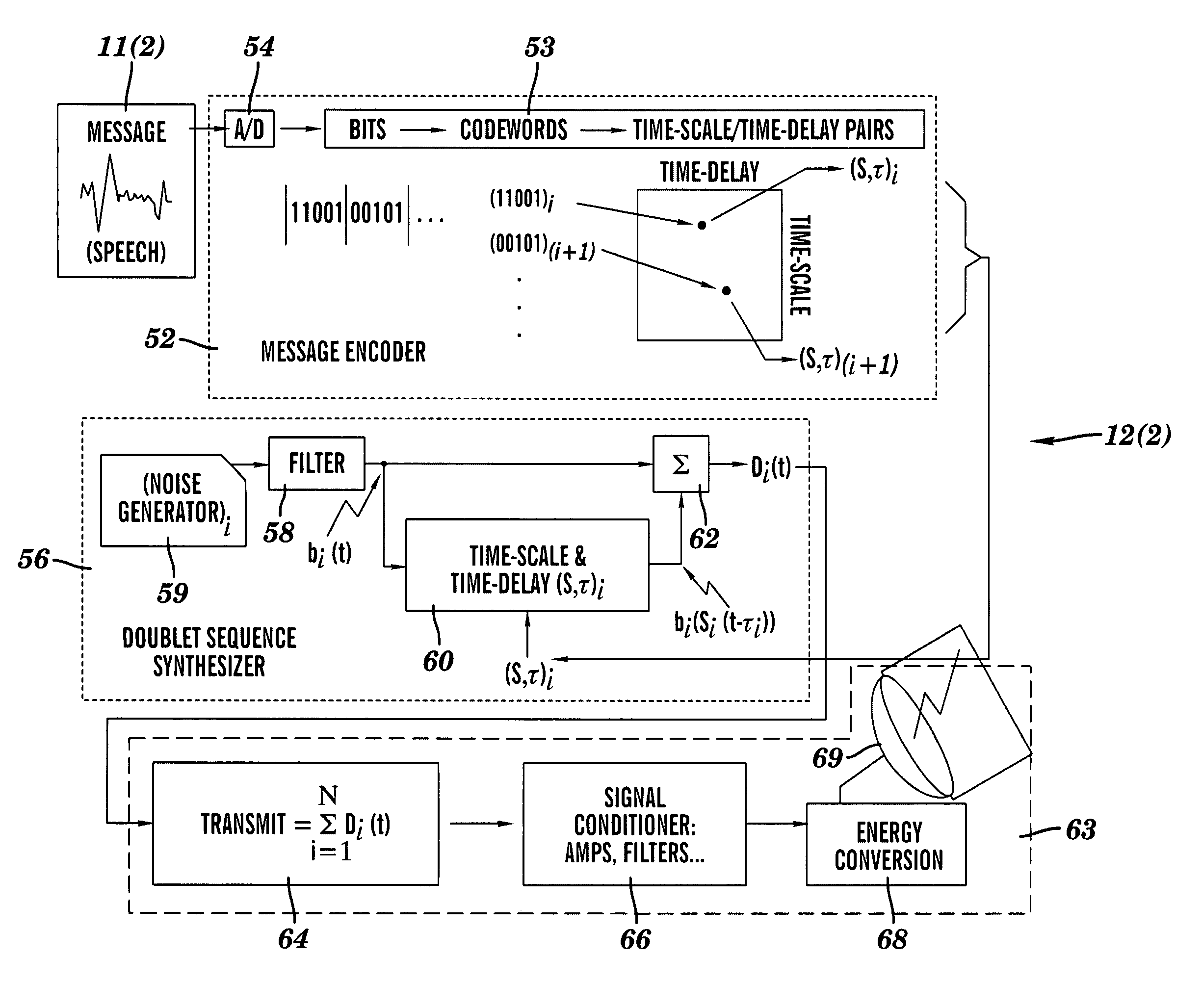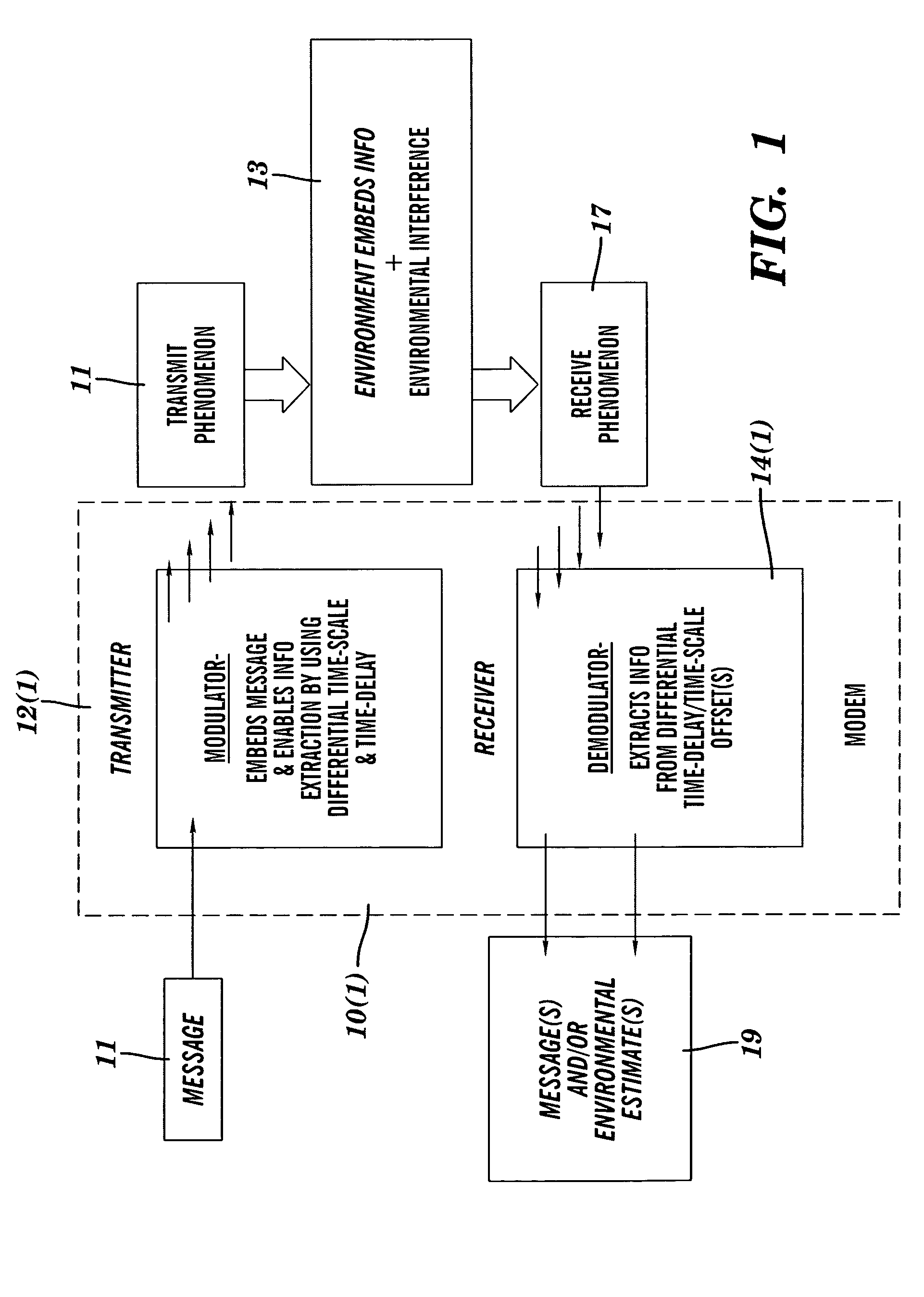Broadband modulation/demodulation apparatus and a method thereof
a modulation/demodulation apparatus and a technology of broadband, applied in the direction of diversity/multi-antenna system, duplex signal operation, polarisation/directional diversity, etc., can solve the problems of incomplete success, further degradation of signal quality, and additional degradation of signal at the transmitter and/or receiver, etc., to achieve robust extraction, easy detection, accurate and precise estimation
- Summary
- Abstract
- Description
- Claims
- Application Information
AI Technical Summary
Benefits of technology
Problems solved by technology
Method used
Image
Examples
Embodiment Construction
[0037]An apparatus and method 10(1) for communicating and / or extracting information through and / or from an environment in accordance with one embodiment of the present invention is illustrated in FIG. 1. The apparatus 10(1) includes a modulator 12(1) and a demodulator 14(1). One of the advantages of the present invention is that it solves the problem of simultaneously achieving robustness, security, high rate information transfer, and spatial processing gain with low cost / complexity system. The present invention is efficient, robust and secure and can be used in variety of different applications, such as communications and / or imaging, such as with radar, sonar, navigation, lidar, acoustic, and other active probing / imaging systems and also in other applications such as water marking.
[0038]Referring to FIGS. 1 and 2, the apparatus 10(1) has a modulator 12(1) in accordance with one embodiment of the present invention. The modulator 12(1) includes a signal generator 16 that generates an...
PUM
 Login to View More
Login to View More Abstract
Description
Claims
Application Information
 Login to View More
Login to View More - R&D
- Intellectual Property
- Life Sciences
- Materials
- Tech Scout
- Unparalleled Data Quality
- Higher Quality Content
- 60% Fewer Hallucinations
Browse by: Latest US Patents, China's latest patents, Technical Efficacy Thesaurus, Application Domain, Technology Topic, Popular Technical Reports.
© 2025 PatSnap. All rights reserved.Legal|Privacy policy|Modern Slavery Act Transparency Statement|Sitemap|About US| Contact US: help@patsnap.com



